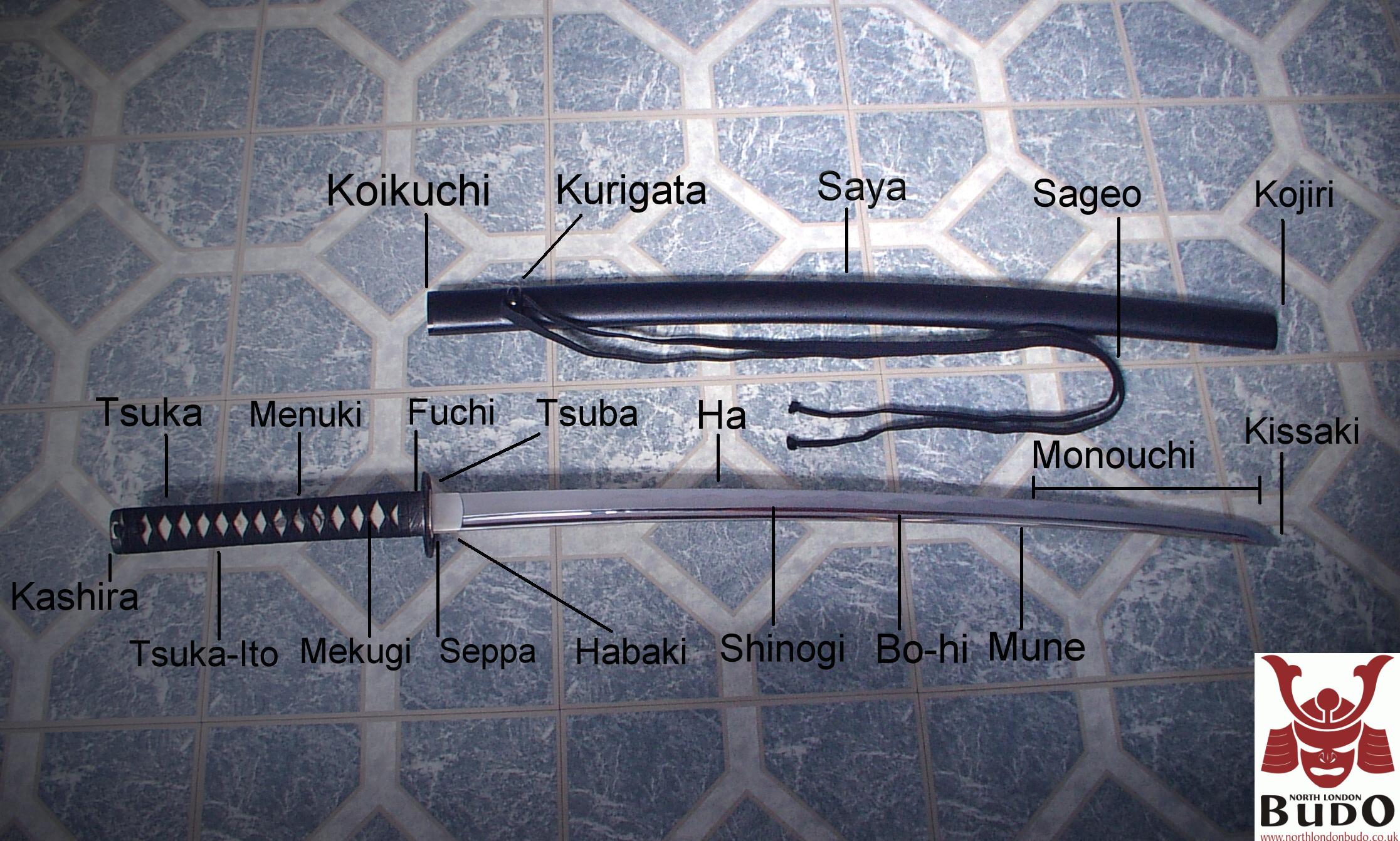

The main material is Wood, yet some parts are in metal and can be iron or aluminum. The carpentry procedure is simple but needs to be conducted with precaution and care not to destruct and therefore lose the piece of wood. The Magnolia wood is light, dry and easily worked. Saya is made of a particular Wood type produced by a tree called magnolia. Actually it is composed of several parts and several materials. Already, they are made of the same material and precisely from the same piece of material. Moreover, looking to the Saya and Tsuka, one is to be considered as the reflection of the other.

Saya and Tsuka should complete each other and the design has to be uniform with no discontinuity to the point that Tsuka and Saya should appear as one piece. Sayas are real pieces of art they are designed the way not to create any contrast especially with the Tsuka. These factors can affect the proficiency level required for the realization of the piece and may also affect the material to use for the construction. Generally, Sayas are made to fit the destined Swords: if they are to keep Ninja sword or Samurai Sword if they are to be associated to functional sword or decorative one. Sayas can also be used as weapon in some martial practices Sayas is used a complementary tool to the blade with which the warrior can strike or cover from strikes. They have to be hermetic and allow as few as possible moisture to form on the blade when it is kept. Sayas are made the way not to scratch the blade and preserve his coating layers and therefore they need to be of relative tightness. They serve also as support for the blade: the carrier has the blade within the Saya attached to his belt.

Sayas serve to protect the blade when it is not in use. A Wakizashi has a much shorter handle than the Katana, just long enough to equip the handle with 2 hands.The word Saya refers to the Sheath or Scabbard that the warrior uses to keep the sword. Another key feature is the difference between the handle lengths. With a Wakizashi blade's length varying between 1 to 2 shaku, 30 and 60 cm (12 and 24 in). Yet unlike a Katana, the Wakizashi is a much smaller sword. "Katana" is the term now used to describe the family of swords known as nihontō that are 2 shaku, approximately 60 cm (24 in) in length, or longer. The Wakizashi is often mistaken for the Katanaīy players, due the weapon's general similarity and popularity.The golden hand guard on the Katana is the same shape as the Hebios' symbol found in the Camps Region.This effect does have a short cool down, so it must be used wisely. If an enemy is struck within the period that the effect persists, the weapon will take no damage, and the damage dealt will be increased. Posseses a unique property that is not displayed in other weapons, and is a unique effect known as the Hebios Wind Strike that is activated for a short period when the weapon is unsheathed. The Katana can be used to defend the user slightly when the user carefully angles the blade to block an incoming attack. The Katana is a sword, meaning using slicing motions, using the sharpened side, against an opponent is the most effective way of attacking. Are primarily found in the Chests within the Camps, though they may also be found within Chests on Cave Structures in the Mines, as well as in various Chests found in the Overworld.Ī replica of the naturally-spawning Katana can be crafted through the process of Hebios Mould Crafting.Īpart from acting as a weapon used to attack an opponent, there is a way to use the weapon most effectively.


 0 kommentar(er)
0 kommentar(er)
